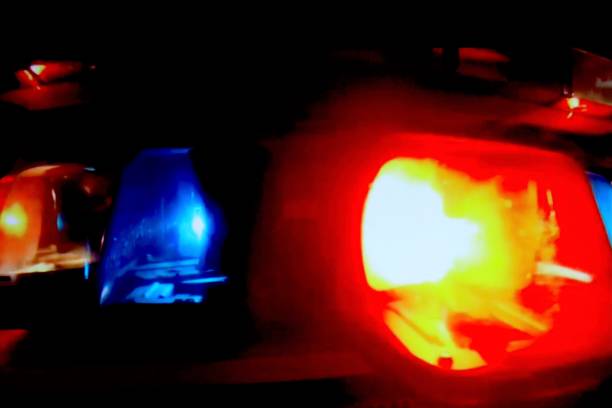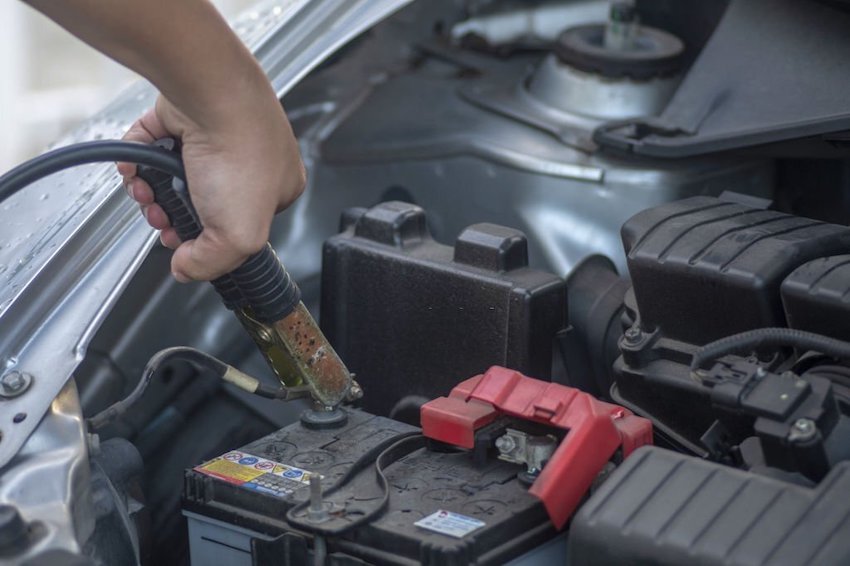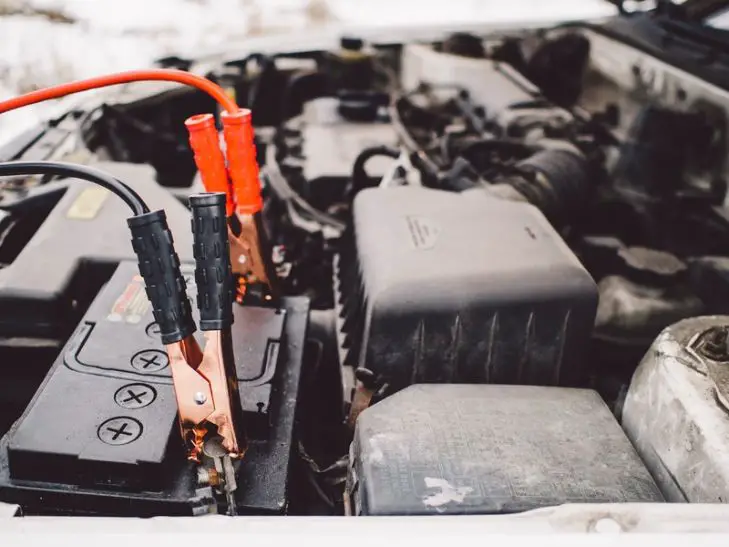A malfunctioning charging system or alternator can easily drain your car’s battery. Extreme weather also contributes significantly to battery depletion. The battery can also be discharged by electric devices like radios and clocks.
So it’s quite normal to wonder do emergency lights drain battery?
Yes, emergency lights do drain your battery. If left on, any electrical item in your car might become a drain. The battery capacity, battery condition, and emergency light power all have an impact on battery runtime. In case the battery is completely dead, you will need to use jumper cables to jump-start the vehicle.
So, how long can you expect before your car battery is completely dead and what should you do afterward? Let’s find out!

Do Emergency Lights Drain Battery: The Deciding Factors
Yes, emergency lights do drain your battery. A car’s battery produces the electricity required to power a variety of components. It functions by transforming chemical energy into electrical energy.
If you leave an electrical device on in your vehicle, it can easily become a draining factor. If left on for a long time, even the door ajar light will drain the battery. So, when left on for a long time, emergency lights do indeed drain the car battery.
But how quickly it will drain the battery depends on a couple of things. Let’s take a look at these deciding factors that influence battery drainage-
Battery Capacity(Ampere/hour)
Car battery capacity is measured in Ah (Ampere/hours) and typically ranges between 35Ah to 100Ah. The rate at which the emergency lights drain your car’s battery will vary depending on its capacity. So, the higher the Ah, the longer it will last before being completely drained.
Because of the differences in internal designs, types, and chemistry, battery groups include different battery capacities. You can expect the following capacities in your car battery-
| Capacity | BCI Group | Ampere/hour( Ah) |
Low Capacity | Group 51 & 51R | 38-60 Ah |
| Group 35 | 40-65 Ah | |
| Group 75 | 44-60 Ah | |
Mid Capacity | Group 47(H5, L2,55L2) | 50-60 Ah |
| Group 34/78 | 55-68 Ah | |
| Group 48 (H6, L3, 66L3) | 60-75 Ah | |
| Group 65 | 70-75 Ah | |
| Group 94R | 75-80 Ah | |
High Capacity | Group 24 | 75-85 Ah |
| Group 49 (H8, L5, 88L5) | 80-95 Ah, |
As seen in the table, larger batteries typically have a longer service life. So, with emergency lights left on, they will last much longer than low and mid-capacity batteries.
Power of Emergency Light
Power options for the emergency light includes 7.2, 8, 9, 12.5, 18, and 25 watts. The car battery will discharge more quickly with higher wattage. However, keep in mind that from a broader perspective, one light with these wattages wouldn’t be doing much harm.
But emergency lights can come in many configurations- such as containing 4 lights to 32 lights. So, with at least 4 lights working with this wattage, it can speed up the draining process. Even then, it could take at least 5 to 6 hours for your car’s battery to completely drain.
Battery Condition
Battery life is typically between 3-4 years, however, they can sometimes last longer. Battery conditions can directly impact how fast the emergency light completely drains the battery.
Deteriorated battery often stops the car from starting. As time passes your battery loses its capability to hold a full charge. Moreover, poorly maintained batteries die on a regular basis.
However, a fresh or new battery retains its charge for a much longer period of time. As a result, when lights are kept on, a new battery will last longer than the old or poorly maintained one.
Other Light Sources
Along with headlights, sometimes people forget to turn off a couple of other lights by mistake. Lights like tail lights and low-beam headlights are usually left on. These lights significantly speed up battery drain. With each light using a significant amount of power, your battery will last half of its expected time.
The above factors collectively cause your batteries to discharge. But, keeping your lights on doesn’t mean they will be completely depleted in an hour.
So, how long can you expect your batteries to last before they die?

How Long Do Lights Need to be On to Drain A Battery Completely?
The number of emergency lights, how much power they consume, and the size of the battery will determine how long it will take to be completely drained.
In order to find this probable runtime, first we need to find out how much current (amp) is used for powering the emergency lights.
There are numerous configurations available for emergency lights. The number of bulbs in it can range from 4 to 32. In order to calculate our runtime, we’re considering emergency lights consisting of 4 bulbs.
Therefore, the wattage of emergency lights will be multiplied by 4. This is to determine the total power required to illuminate the lights. Considering 7.2 watts per bulb we find-
7.2 *4 = 28.8 W
Now, we need to divide this total power of 28.8 W by 12V. This 12V is the voltage needed to start the car’s battery.
28.8 W/ 12 V = 2.4 amps
After dividing we get 2.4 amps. This is the power consumed by the emergency lights each time they are turned on.
The majority of emergency lights usually blink. As a result, we need to consider a 50% duty cycle. And for a 50 % duty cycle, the power consumed needs to be divided by 2. Therefore, the power consumption will be –
2.4/2= 1.2 amps
Now, if we divide the battery capacity by 1.2 amps, we can calculate the time it will take for the emergency lights to totally drain the battery.
As previously stated, the battery is available in three capacities. Each of these capacities has different runtime (Ah) available in their range. We will be considering 38–60 Ah for low capacity, 50–80 Ah for mid-capacity, and 75–90 Ah for high-capacity batteries for this calculation.
For Low Capacity:
38 Ah/1.2 amps= 32 hours
60 Ah/1.2 amps= 50 hours
For Low capacity batteries, you can expect emergency lights to run for 32-50 hours before it’s completely drained.
For Mid Capacity:
50 Ah/1.2 amps= 42 hours
80 Ah/1.2 amps= 67 hours
For Mid capacity batteries, you can expect emergency lights to run for 42-67 hours before it’s completely drained.
For High Capacity:
75 Ah/1.2 amps= 63 hours
95 Ah/1.2 amps= 79 hours
For High capacity batteries, you can expect emergency lights to run for 63-79 hours before it’s completely drained.
This calculation was done using 7.2-watt emergency lights. But emergency lights come with a variety of wattages. Let’s have a look at their run time for each battery capacity-
| Emergency Light Power | Low Capacity(38-60 Ah) Runtime | Mid Capacity(50-80 Ah) Runtime | High Capacity(75-95 Ah) Runtime |
| 7.2W(7.2*4=28.8 W) | 32-50 Hour | 42-67 Hour | 63-79 Hour |
| 10W(10*4=40 W) | 23-36 Hour | 30-48 Hour | 45-57 Hour |
| 12.5W(12.5*4=50 W) | 18-28 Hour | 24-38 Hour | 36-45 Hour |
| 18W(18*4=72 W) | 13-20 Hour | 17-27 Hour | 25-32 Hour |
| 25W(25*4=100 W) | 9-14 Hour | 12-19 Hour | 18-23 Hour |
| 36W (Lightbar) | 25-40 Hour | 33-53 Hour | 50-63 Hour |
| 40W (Lightbar) | 23-36 Hour | 30-48 Hour | 45-57 Hour |
| 96W (Lightbar) | 9.5-15 Hour | 12.5-20 Hour | 19-24 Hour |
| 120W (lightbar) | 7.6-12 Hour | 10-16 Hour | 15-19 Hour |
This estimated runtime is based on a completely fresh battery. For an older car or one that has been on road for some time, you should divide these numbers in half.
What Does It Mean If the Emergency Lights Drain the Battery Within 15 Minutes?
Your emergency lights draining battery within 15 minutes is a result of an old or bad battery. Even if emergency lights have been on for 4-5 hours, starting your car should be no trouble.
It indicates that there may be a fault with your battery. Check the year your battery was manufactured. It should include a sticker that indicates the runtime. Most batteries have a lifespan of 3-4 years. Anytime after that, they are vulnerable to failure.
If the battery is not old, you might want to check your alternator. Because an incorrect charge can lead to overvoltage. A bad alternator can easily drain your battery and sometimes even destroy it.
Can Emergency Lights Still Work When the Car Battery is Dead?
No, if your car battery is dead, the emergency lights won’t turn on.
Emergency lights can only function if there’s some power left in the battery. Even a weak battery with a low charge can still turn the lights on.
What Other Factors Might Affect Your Battery Runtime?
Leaving any form of light on in a car overnight will drain the battery, as we just discussed. However, there are a couple of other elements that contribute to draining.
Parasitic Drain
Your car battery continues to power the radio, clock, and alarm system even after the engine is shut off. This is considered a parasitic draw. A certain amount of parasitic drain is expected from each car.
Older cars have parasitic draws under 50 mA. But the newer cars have a parasitic draw between 50 and 85 mA. Anything above this range is considered to be a problem. Your car’s battery drains much faster as a result of this additional parasitic drain.
Defective Alternator
Battery performance can be decreased by alternators with damaged diodes. When the diode is functioning properly, the current only flows in one way.
A broken diode will, however, result in the current flowing in the opposite direction. As a result, the battery drains as the charging circuit keeps running even when the car’s engine is off.
Loose Cable & Corrosion
With time your battery’s positive and negative connections can come loose or be affected by corrosion. Your battery’s ability to effectively transmit power is compromised due to these cables.
It’s hard to start your engine with loose cables. This drains a lot of power as your battery forces itself to transmit power properly.
Even when you do get the engine to start, you can easily lose control while driving. It is also really harmful to your car’s electronic systems.
Frequent Short Car Trips
Your battery uses a lot of energy when you start the engine. The alternator charges your battery when the engine is running. If you frequently take short trips, it won’t have enough time to fully recharge your battery.
This is a serious issue, especially if your battery is older. Moreover, repeated short trips can reduce the overall longevity of your car battery.
Extreme Temperature
Both freezing winter and scorching summer days can be detrimental to your car’s battery. New or fresh batteries are more resistant to extreme temperature fluctuations.
However, if your battery is old, extreme weather impairs its functionality. And it can possibly lead to complete failure.
These were all the factors that drain your car battery. Now that all the draining factors are clear, what should you do to recharge it?
What Should You Do If Your Battery is Completely Drained?
The easiest solution for the issue is to jump-start the dead car battery. You can do it in two different ways-
- By using a jump starter device; or,
- using jumper cables with the help of another car.
Let’s check both of them down below-
Step-by-Step Process to Jump-Start the Car
Although it seems like a nightmare, most cars do keep jumper cables for situations like this. So, be patient and then follow the instructions listed below –
- First, you need to park both cars facing each other. To ensure your safety, activate the parking brake. After that, open both hoods and look for the batteries. Most batteries are found under the hood, close to a headlamp.
- Locate the battery’s positive and negative terminals. Ensure there is no rust on them. Now, attach the red clamp to the dead battery’s positive post. Connect the second red clamp to the functional battery’s positive post next. The first part of the connection is complete.
- Connect the black clamp to the functional battery’s negative post. You will see an unpainted metal surface right there. The last black clamp should then be attached to this metal surface. This is your car’s earthing point. The connection is now complete.
- Now, request the fellow driver to start his car. Wait for roughly 1 minute. You should be able to turn the engine on after this.
- However, if this doesn’t work and the engine is not starting, wait for a few minutes. Then you need to repeat the procedure 2 times more to get your car started.
Jump Starter Devices
Having jumper cables on hand in case your car battery dies is always a good idea. However, you may not always be lucky in finding another car to jump start. So, having one of the jump starter gadgets is far more preferable.
Your battery can be restarted using a portable jump starter without any additional assistance. One of the most potent and robust jump starters is the Clore Automotive Jump-N-Carry portable battery starter. It has a massive 1,700 as the maximum amperage. It can effortlessly jump larger vehicles; such as pickup trucks and SUVs.
The TopVision is another jumper starter with a significant peak amplitude. Because of its compact size and robust carrying case, this battery charger is more portable.
You can easily recharge your battery using these two techniques. But how many times can you exactly jump-start your car before it kills your battery?
How Many Times Can You Jump-Start Your Car?
You shouldn’t jump-start more than 3 times. Your car’s battery won’t be damaged by jump-starting it once or twice. Three times is the maximum time you can jump-start it.
If your car needs to be jump-started constantly, it damages your battery. Moreover, this is a sign of a dead battery and you need to replace it as soon as possible.
FAQs
Does Using the Headlights While Driving Deplete the Battery?
Yes, leaving headlights on while driving can deplete your car battery. It’s possible that you’re keeping the lights on even when your car is parked. And as a result, your battery keeps draining. Your headlights will continue to operate until the battery is completely discharged.
Is It Possible to Damage Your Battery by Giving Someone A Jump Start?
No, your car won’t be damaged if you jump-start someone’s car. It will definitely take some charge from your battery. But even so, you could simply recharge it. If the jumpstart works, the donor vehicle doesn’t sustain any major damage.
If the Lights Still Work Can the Car Battery Be Dead?
Your battery may still be dead or undercharged even if your radio, lights, or accessories turn on. These parts use a lot less power than others. As a result, your battery might have sufficient power to turn on these lights and radio. However, it may not be enough to activate the starter.
End Words
Now you know all the details about do emergency lights drain battery. Yes, it does, but how long it will take depends on various factors. Hopefully, you understood them and will use the advice to prevent similar problems in the future.
Comment down below if you face any other issues or would like us to cover other battery-related problems.
